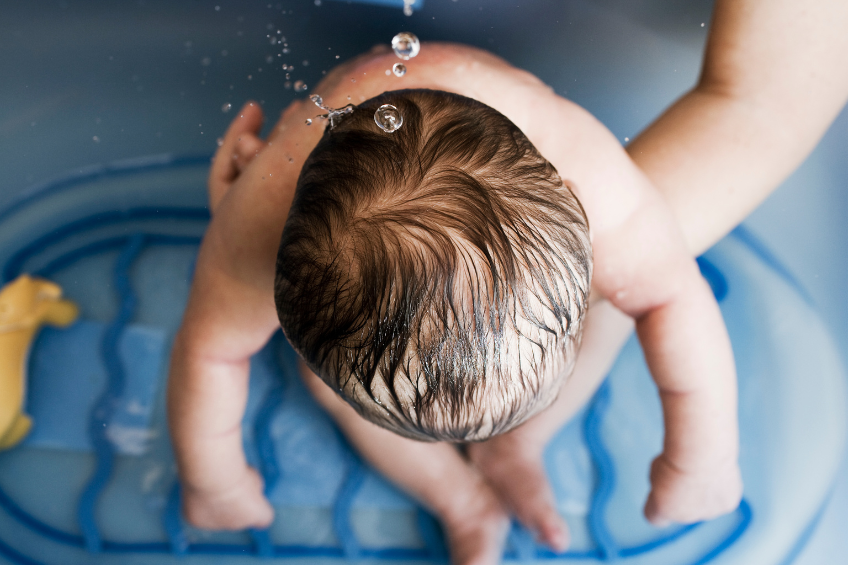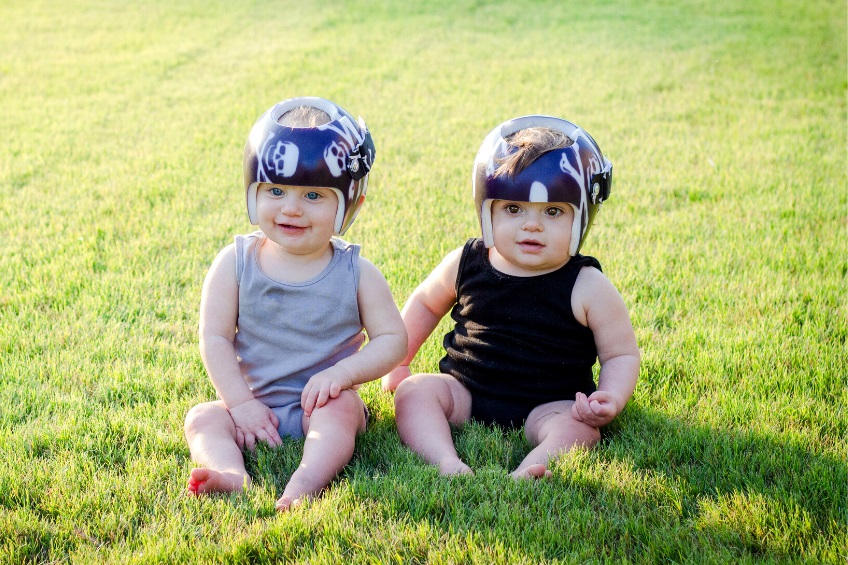Is My Newborn Baby a Conehead?
/
Congratulations, you have just given birth to your first baby and I’m sure you’re ecstatic whether it’s a boy or girl (which you probably knew already). The hospital pediatrician has proclaimed this new gift from G-D healthy and that certainly takes the pressure off you and your spouse from worrying about any complications. However, having finally had a chance to be alone with your newborn you both are concerned about your baby’s elongated head shape.

Newborn Head Molding
As a new mom, you are so relieved that you had a natural headfirst birth – no cesarean section or breech delivery. In fact, your obstetrician remarked that your delivery was one of his easiest births however, it could be that the speed of the delivery could have something to do with the head shape, perhaps it’s the size of the mom’s birth canal itself or maybe it’s as simple hereditary, that large or elongated heads run in you or your husband’s family.
When an infant is delivered in a head-first position there is pressure during the delivery in the birth canal. The birth canal actually molds the soft bones of the head into an oblong shape. Approximately one out of three babies born through the birth canal have a temporary condition called, conehead. For those of you who are movie buffs, this term brings to mind those tall thin coneheads that look abnormal. However, in a baby, this shape is completely normal and usually rounds out in less than a week and sometimes as little as a day after birth.
We all have the image of a perfect baby with a perfectly shaped head as in the Gerber or Beech-Nut® baby food ads. First, we don’t know for sure that those pictures are doctored, nor I we privy to all that went on as your baby comes down the birth canal Yes, it’s true, your birth class teacher emphasized to not push too early but the doctor or nurse did instruct you to push so that means your body was ready to expel the baby.
Newborn head molding is caused by pressure on the baby’s head in childbirth as he or she descends the birth canal. Looking at a side sketch of the baby’s head coming down the birth canal it’s so amazing to see how the women’s body is actually shaped exactly for the head to come down under normal circumstances. It’s a possibility that during a normal head first delivery the birth canal is not large enough to accept the baby’s head and he or she will emerge head first with an elongated rather than round head. This likelihood usually disappears within a day or two which is so amazing because the newborn’s skull bones are so soft and flexible. Molding is defined as the skull compressing to fit through the mom’s birth canal.
Cranial sutures are spaces on the baby’s head between the bony panels of its skull which you can feel as soft spots when you touch the top of the head. During a headfirst delivery, these sutures between the baby’s bones allow for a change in head shape. These sutures or spaces are vital because they allow the brain of the baby to grow inside the skull properly. Even such conditions as, caput succedaneum or fluid collecting in the baby’s scalp or cephalohematoma or blood collecting under the scalp are relatively common conditions that will usually disappear in a few days.
Help, My Baby’s Head Looks Like a Conehead
As your baby emerges crying from your body his head may appear pointy after successfully navigating the journey down the birth canal. Looking at a sketch of the baby in the birth canal you cannot help but notice how tight the squeeze is for the head to come down. This is why sometimes the baby’s head must be suctioned or the doctor has to use forceps to bring the baby out into the world.
Let’s look at some measurements of a typical woman’s birth canal and judge how miraculous it is that the baby gets out at all. 4 inches or 10 centimeters is the approximate width or diameter of the women’s cervix at the final stage of labor. Now, if a newborn’s head measures on the average of 13.8 inches in total circumference (to clarify measuring with a tape measure all around the head) then this is quite a tight fit for your miracle to appear safely.

Wondrously as your baby comes out its head will adjust in the following ways. Since the bones of the newborn’s skull aren’t yet totally formed, the two large soft spots or sutures cause the head to reshape as the newborn descends from the birth canal. If your baby comes early, or if you have exceedingly long labors or a narrower than average birth canal it is more likely your baby will be born with a temporary conehead. No worries, since there is clearly nothing wrong with a cone shaped baby head except people in the know realize that you are one of the lucky ones who had a regular delivery as opposed to cesarean section or breach birth. In both cases the head will appear more normally shaped or else have other shape issues, but conehead babies usually emerge from natural headfirst births.
My Baby Has a Just Plain Large Head
Unless your doctor is concerned about water on the brain or some other serious condition the chances are fair that someone in your family has a large head. You deny this fact vehemently until you go to your niece’s wedding and see one of your second cousins who you have never met and guess what he has? A large head. You go over to him and introduce yourself and ask him quietly if any of his children are at the wedding. He reminds you that children were not invited but he and his wife brought their new three-month-old baby along since his wife is nursing and the baby will not accept a bottle from the babysitter yet.

It was so relieving when you see a baby about the same age as yours with the same size head. You bravely ask the mom if she was concerned about the size of her baby’s head. She replied that the doctor assured her that as long as he is in the 98% of size it’s fine, he’s not yet off the charts.
Is There Anything I Can Do to Reduce My Baby’s Cone Shaped Head?
1) If you find that your baby’s head has not rounded yet there are certain things that you can do to help speed the head’s recovery. For example, even a newborn infant can be put on their tummy for a little while when awake to take the pressure off the head.
2) Measuring your baby’s head when it comes home from the hospital and then measuring it a week later will reassure you that it is slowly shrinking even if it’s by an eighth of an inch.
3) Holding your baby as often as possible when awake will avoid any other head shape issues such as plagiocephaly.
4) Wearing your baby in a carrier will relieve any pressure on the back of their head.
5) Alternate sides for each feeding. Whether you are bottle or breast feeding make sure to alternate feeding sides. I know you are so busy, and you may ask how you can remember which side you used for the latest feeding? Another issue is if you find one side more comfortable than the other for bottle feeding. Nursing mothers can put a pin on their clothing on the side that is next so they will remember when their mind is not on the feeding for the moment.

Does My Baby Need a Cranial Helmet?
Cranial helmets are generally prescribed for babies with plagiocephaly or flat head syndrome. You may be inclined to ask your pediatrician for a recommendation for a “baby conehead helmet” therapist but baby helmet therapy is not generally recommended unless the back of the baby’s head is too flat. Fortunately, cone shaped heads generally resolve themselves without any treatment.
Final Words
Some women may call the ride down the birth canal a battle against nature. It seems that there is just not enough width for the baby to come down the birth canal. Yet miraculously the headfirst baby does emerge victorious at the moment of birth. However, the fight may leave the baby with a cone shaped head temporarily. The head usually returns to its original round shape soon after birth from a day to a week approximately. With babies who have coneheads delivered either by breach or C section this condition is not related to the birth and should be checked out. If you are concerned about his or her head shape after several weeks consult with your pediatrician and ask him or her if he could recommend a cranial therapist to check out the head. Some cranial centers will not charge for an initial consultation and most of the time they will not prescribe a helmet for a cone shaped head.

Cranial Therapy Centers is the only early interventions cranial center in the United States which provides both helmet and manual therapy treatment. We are American Board for Certification in Orthotics, Prosthetics and Pedorthics Facility. Visit us in Lakewood NJ, at 1352 River Ave Unit 14, Lakewood NJ, 08701 or in Teaneck NJ at 1086 Teaneck Road Suite 3F, Teaneck, NJ 07666. You can also email us info@cranialtherapycenters.com
